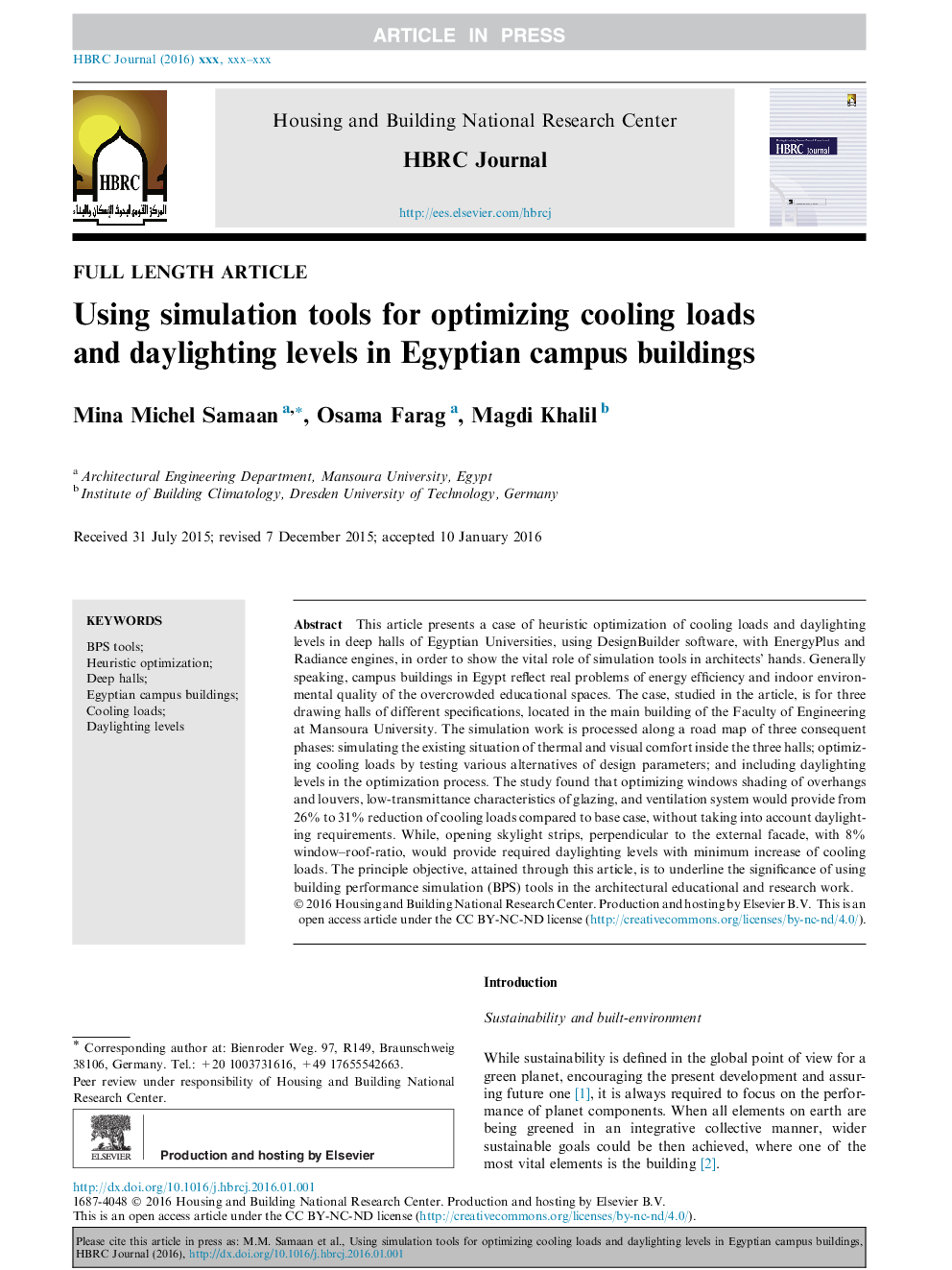ترجمه فارسی عنوان مقاله
با استفاده از ابزارهای شبیه سازی برای بهینه سازی بارهای خنک کننده و میزان نور روز در ساختمان های پردیس مصر
عنوان انگلیسی
Using simulation tools for optimizing cooling loads and daylighting levels in Egyptian campus buildings
| کد مقاله | سال انتشار | تعداد صفحات مقاله انگلیسی |
|---|---|---|
| 161617 | 2018 | 14 صفحه PDF |
منبع

Publisher : Elsevier - Science Direct (الزویر - ساینس دایرکت)
Journal : HBRC Journal, Volume 14, Issue 1, April 2018, Pages 79-92

